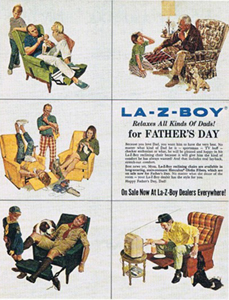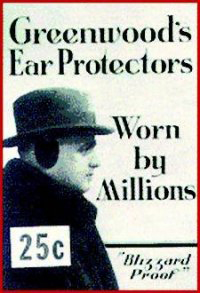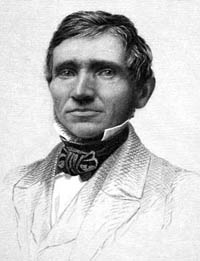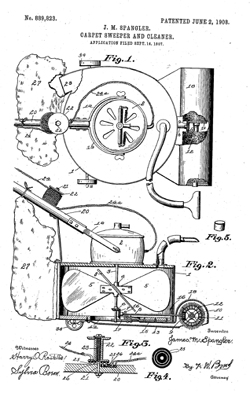 On March 24, 1927, two cousins, Edward Knabusch and Edwin Shoemaker, left their steady, secure employment to start a furniture company. Knabusch was a woodworker and Shoemaker was a farmer. Shoemaker became interested in woodworking after learning about all of tools Knabusch used. They began building furniture in Knabusch’s father’s garage for their new company, the Kna-Shoe Manufacturing Company. With Shoemaker’s building talent and Knabusch marketing skills, the company began to grow.
On March 24, 1927, two cousins, Edward Knabusch and Edwin Shoemaker, left their steady, secure employment to start a furniture company. Knabusch was a woodworker and Shoemaker was a farmer. Shoemaker became interested in woodworking after learning about all of tools Knabusch used. They began building furniture in Knabusch’s father’s garage for their new company, the Kna-Shoe Manufacturing Company. With Shoemaker’s building talent and Knabusch marketing skills, the company began to grow.
The cousins changed the name of the company to Floral City Furniture. Borrowing money from the community, a manufacturing plant was built. It was here that the owners began designing novelty furniture. One of their first designs was for a telephone stand with a build-in seat. The product was very popular but another company soon started copying and selling the piece. Another design was a chair built for “nature’s way of relaxing.” It was an outdoor wooden chair with a reclining mechanism shaped to the contour of a person’s body. The first prototype for this chair was designed from orange crates. Continue reading “Television Viewing Just Got Better: Invention of the La-Z-Boy”


 Horace Wells first witnessed the effects of laughing gas in 1844 when it was given to him by a member of a traveling circus. He would then become the first patient to be operated on under anesthesia. He had a tooth pulled by an associate. He later began using the gas on his own dental patients. He never attempted to patent the procedure because he believed the pain relief should be available to all.
Horace Wells first witnessed the effects of laughing gas in 1844 when it was given to him by a member of a traveling circus. He would then become the first patient to be operated on under anesthesia. He had a tooth pulled by an associate. He later began using the gas on his own dental patients. He never attempted to patent the procedure because he believed the pain relief should be available to all. Chester Greenwood was an avid ice skater who lived in bitterly cold Maine. He attempted to keep his ears warm while skating using a scarf. But the bulky and itchy scarf he wrapped around his ears was unsuccessful. He needed to find a better way to stay warm while skating. At the age of 15, he made two circular hoops from wire and asked his grandmother to sew beaver fur and velvet on them. He held his two fur covered loops together with a steel band that created a headband. His new contraption was more much successful in keeping his ears warm.
Chester Greenwood was an avid ice skater who lived in bitterly cold Maine. He attempted to keep his ears warm while skating using a scarf. But the bulky and itchy scarf he wrapped around his ears was unsuccessful. He needed to find a better way to stay warm while skating. At the age of 15, he made two circular hoops from wire and asked his grandmother to sew beaver fur and velvet on them. He held his two fur covered loops together with a steel band that created a headband. His new contraption was more much successful in keeping his ears warm. Charles Goodyear despite having no money, no knowledge of chemistry and only the crudest of tools, spent years experimenting with rubber. Prior to starting his experiments with rubber, Goodyear had a hardware business which went bankrupt. That was the beginning of many disastrous business attempts undergone by Goodyear. His first foray into inventing rubber products was not actually for rubber. Instead he invented a valve for inflating rubber life preservers. In 1834, he tried to sell his design to the Roxbury India Rubber Company in New York City. But on his visit there, he discovered that Roxbury India Rubber Company was on the verge of failing. Customers were returning life preservers because they were melting in the heat. The business was so bad and the failure such an embarrassment that a pit had been dug to bury failed products. The valve needed improving but the rubber was worse.
Charles Goodyear despite having no money, no knowledge of chemistry and only the crudest of tools, spent years experimenting with rubber. Prior to starting his experiments with rubber, Goodyear had a hardware business which went bankrupt. That was the beginning of many disastrous business attempts undergone by Goodyear. His first foray into inventing rubber products was not actually for rubber. Instead he invented a valve for inflating rubber life preservers. In 1834, he tried to sell his design to the Roxbury India Rubber Company in New York City. But on his visit there, he discovered that Roxbury India Rubber Company was on the verge of failing. Customers were returning life preservers because they were melting in the heat. The business was so bad and the failure such an embarrassment that a pit had been dug to bury failed products. The valve needed improving but the rubber was worse.  The first upright vacuum cleaner was invented by a janitor in Canton, Ohio. James Spangler was extremely prone to allergies and he was sure that his cough and asthma attacks were caused by the carpet sweeper he used at work. To alleviate this problem, he created a very basic suction sweeper. His device was just a box fan, a broom handle, a tin soap box and pillow case to collect dust. Despite being primitive and hard to use, the device did actually work. Spangler’s cough and asthma attacks lessened. Spangler continued to refine his “suction sweeper” and eventually applied for a patent. On June 2, 1908, he received US Patent Number 889,823 for a Carpet Sweeper and Cleaner.
The first upright vacuum cleaner was invented by a janitor in Canton, Ohio. James Spangler was extremely prone to allergies and he was sure that his cough and asthma attacks were caused by the carpet sweeper he used at work. To alleviate this problem, he created a very basic suction sweeper. His device was just a box fan, a broom handle, a tin soap box and pillow case to collect dust. Despite being primitive and hard to use, the device did actually work. Spangler’s cough and asthma attacks lessened. Spangler continued to refine his “suction sweeper” and eventually applied for a patent. On June 2, 1908, he received US Patent Number 889,823 for a Carpet Sweeper and Cleaner. Earl S. Tupper envisioned himself a modern day Leonardo da Vinci. He was always dreaming up new inventions. He filled notebooks with his ideas which included an improved garter for stockings, permanent-press trousers, and a boat powered by fish. He even received several patents for shoe heals and a comb case. None of his ideas led to the success Tupper was hoping for until he began working with plastics.
Earl S. Tupper envisioned himself a modern day Leonardo da Vinci. He was always dreaming up new inventions. He filled notebooks with his ideas which included an improved garter for stockings, permanent-press trousers, and a boat powered by fish. He even received several patents for shoe heals and a comb case. None of his ideas led to the success Tupper was hoping for until he began working with plastics. Swedish chemist, inventor and engineer Alfred Nobel held more than 350 patents and owned several companies which created and sold explosives. Still he is best known as the founder of the Nobel Prizes and that is the way he wanted.
Swedish chemist, inventor and engineer Alfred Nobel held more than 350 patents and owned several companies which created and sold explosives. Still he is best known as the founder of the Nobel Prizes and that is the way he wanted.